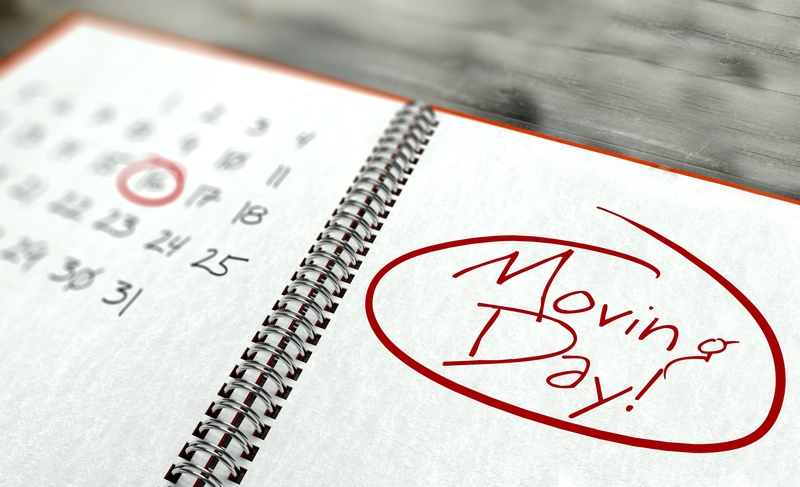Essential Guide to Transporting Your Bed and Mattress
Posted on 21/06/2025
Essential Guide to Transporting Your Bed and Mattress
Moving is an exciting chapter of life, but transporting oversized and delicate items like your bed and mattress can be challenging. Whether you're moving locally or relocating across the country, ensuring your bedroom essentials arrive safely and undamaged is essential for a smooth transition. In this comprehensive guide, we'll uncover the best practices for transporting your bed and mattress, discuss the best tools and techniques, and answer your most common questions.
Why Properly Transporting Your Bed and Mattress Matters
Often overlooked, the process of moving your bed and mattress requires careful planning. A mattress exposed to dirt and moisture or a bed frame lost to accidental dings can turn restful sleep into a nightmare. Moreover, mishandling moves can void warranties, affect hygiene, and hurt the lifespan of your bedroom furniture. That's why understanding transport techniques is vital for every homeowner and renter.
The Risks of Incorrect Mattress and Bed Transport
- Physical Damage – Bending or folding mattresses can ruin their internal structure, while unprotected bed frames can sustain scratches, dents, or breakage.
- Hygiene Issues – Exposure to dust, moisture, and pests during transit can contaminate your mattress and bedding.
- Warranty Voidance – Many manufacturers' warranties are rendered void if the product is not transported or handled correctly.
- Injury Risk – Improper lifting and carrying can lead to personal injuries.

Preparations Before Moving Your Bed and Mattress
Gathering the Right Packing Tools
Start by securing all the necessary moving supplies. Use this moving checklist for beds and mattresses:
- Mattress bags or covers
- Bubble wrap or moving blankets
- Strong packing tape and scissors
- Disassembly tools (wrenches, screwdrivers, Allen keys)
- Seal-able plastic bags for screws and small parts
- Furniture sliders or dollies
- Stretch wrap for headboards and posts
- Labels and markers
Disassembling Your Bed Frame
Most bed frames become easier to transport once they are taken apart. Here's how to do it safely:
- Remove bedding and mattress first. Pack these separately in clean bags.
- Disassemble the frame. Consult your manufacturer's instructions for guidance. Start with headboards, then footboards, side rails, and slats.
- Keep hardware together. Place bolts, screws, and nuts in labelled bags and tape these securely to the corresponding frame pieces.
- Protect fragile items. Wrap wooden or upholstered components in moving blankets or bubble wrap.
Properly Packing Your Mattress
Unlike frames, mattresses demand special attention as they are bulky and vulnerable:
- Place your mattress in a mattress bag to protect it from dirt and moisture.
- Secure the bag tightly with packing tape to avoid rips during handling.
- Do not bend or fold the mattress unless it is a foldable or foam type. Most inner-spring and hybrid mattresses can be permanently damaged if compressed.
- If space allows, keep the mattress upright for easier handling and loading.
Choosing the Right Transportation Option
How you move your mattress and bed depends on distance, the size of your items, and available vehicles.
DIY Moving -- Renting a Truck or Van
If you are moving locally or with a smaller load, renting a covered moving truck or van is ideal. Ensure the vehicle is large enough for your items to lie flat without bending the mattress or crushing the bed frame. Use moving straps to secure your mattress and bed parts during transit.
Professional Movers
For long-distance moves or for those who don't want the hassle, professional moving companies are worth the investment. They offer expert packing, handling, and insurance, reducing the risk of damage and stress. When hiring pros:
- Verify their experience with large furniture.
- Ask if they provide mattress bags/covers and special padding.
- Confirm insurance coverage for high-value items.
Transporting on Car Roof or Pickup Truck
In a pinch, a mattress can be transported on the roof of a car or in a pickup, but this is not recommended for longer distances or high speeds due to safety hazards. If absolutely necessary, follow these safety steps:
- Use a mattress bag to keep it clean.
- Secure the mattress firmly with heavy-duty ropes or ratchet straps.
- Avoid highways; keep your speed low.
- Check local regulations, as this method may be illegal in some areas.
Tip: Never transport a bed or mattress on the roof of a vehicle unprotected or unsecured.
Packing Your Bed and Mattress for Safe Transit
How to Load a Mattress and Bed into a Moving Vehicle
- Clear the path. Remove all obstacles from your home to the vehicle entrance.
- Load your bed frame components first. Lay large pieces flat and secure them along the sides of the truck.
- Place the mattress upright if possible. This saves space and reduces the risk of crushing other items.
- Secure everything. Use moving straps to tie down both mattress and frame. This prevents shifting during transit.
Don't forget: Place fragile decor (like bedside lamps or glass parts) in clearly marked, padded boxes.
Special Considerations for Memory Foam and Hybrid Mattresses
These specialty mattresses often have unique transportation needs:
- Memory foam mattresses can usually be bent gently for short periods. Avoid long-term compression as this may permanently damage the foam's support qualities.
- Hybrid and spring mattresses should travel flat to preserve internal integrity.
- Use the original packaging if available, as it is designed for optimal protection.
Handling Mattress and Bed Frame Disassembly and Assembly
Disassembly Tips
- Photograph each step before taking your frame apart – this makes reassembly a breeze.
- Label each component and its corresponding hardware bag clearly to avoid confusion after transit.
Assembly at the New Home
- Begin with a clean space. Sweep or vacuum floors before starting assembly.
- Organize all frame components and hardware.
- Follow the manufacturer's instructions. If lost, many instructions are found online.
- Take your time. Assemble carefully, ensuring all screws and bolts are tight for stability and safety.
Best Practices for Mattress and Bed Care During a Move
- Clean before you pack. Vacuum both mattress and frame. Wipe down surfaces to remove dust and debris.
- Let the mattress breathe. On arrival, remove covers and let it air out before use, particularly if it was in plastic for a long duration.
- Inspect for damage. Upon arrival, check for tears, stains, or compromised support. Address issues promptly.
Common Questions About Transporting Beds and Mattresses
Can you fold a mattress for easy moving?
Memory foam mattresses can temporarily be folded, but innerspring and hybrid models should never be bent, folded, or rolled as it can damage internal coils or support layers.
What is the best way to move a king-size bed?
Disassemble as much as possible, pack and label hardware, use two or more people to lift, and transport the mattress flat in a larger moving vehicle to prevent folds or sagging.
Should you remove the bed slats for moving?
*Yes.* Removing slats prevents damage. Place them in a padded bag or wrap them together with tape and add labels.
Is hiring professional movers worth it?
If you have heavy or expensive pieces, professional mattress and bed movers offer experience, protection, and peace of mind worth the extra cost.
Eco-Friendly Mattress and Bed Disposal or Donation
If you're not bringing your old bed or mattress on your move, consider responsible disposal options:
- Donation: Many charities accept gently used mattresses and beds. Check for local guidelines on cleanliness.
- Recycling: Specialized companies break mattresses down for the steel, foam, and fabric.
- Bulk trash pickup: Many cities offer scheduled collection of oversized furniture.
Always check local regulations before discarding your mattress or bed!

Final Tips for a Smooth Mattress and Bed Move
- Enlist friends or professional movers – beds and mattresses are awkward and heavy.
- Measure doorways and hallways at both locations to ensure the bed and mattress fit.
- Transport the mattress and frame in clean, dry vehicles, never exposed to rain or excessive heat.
- If moving solo, consider hiring help for lifting and navigating stairs.
Conclusion: Making Your Mattress and Bed Move Stress-Free
Transporting your bed and mattress doesn't need to be a daunting task. With the right tools, preparation, and know-how, you can ensure that your essential bedroom pieces arrive safely and ready for restful nights. Whether choosing a DIY approach or relying on professional mattress and bed movers, following the steps in this bed and mattress transportation guide will protect your investment and give you peace of mind during your move.
Are you preparing for a move? Use this guide to transport your bed and mattress like a pro, and start your new chapter well-rested and stress-free!



